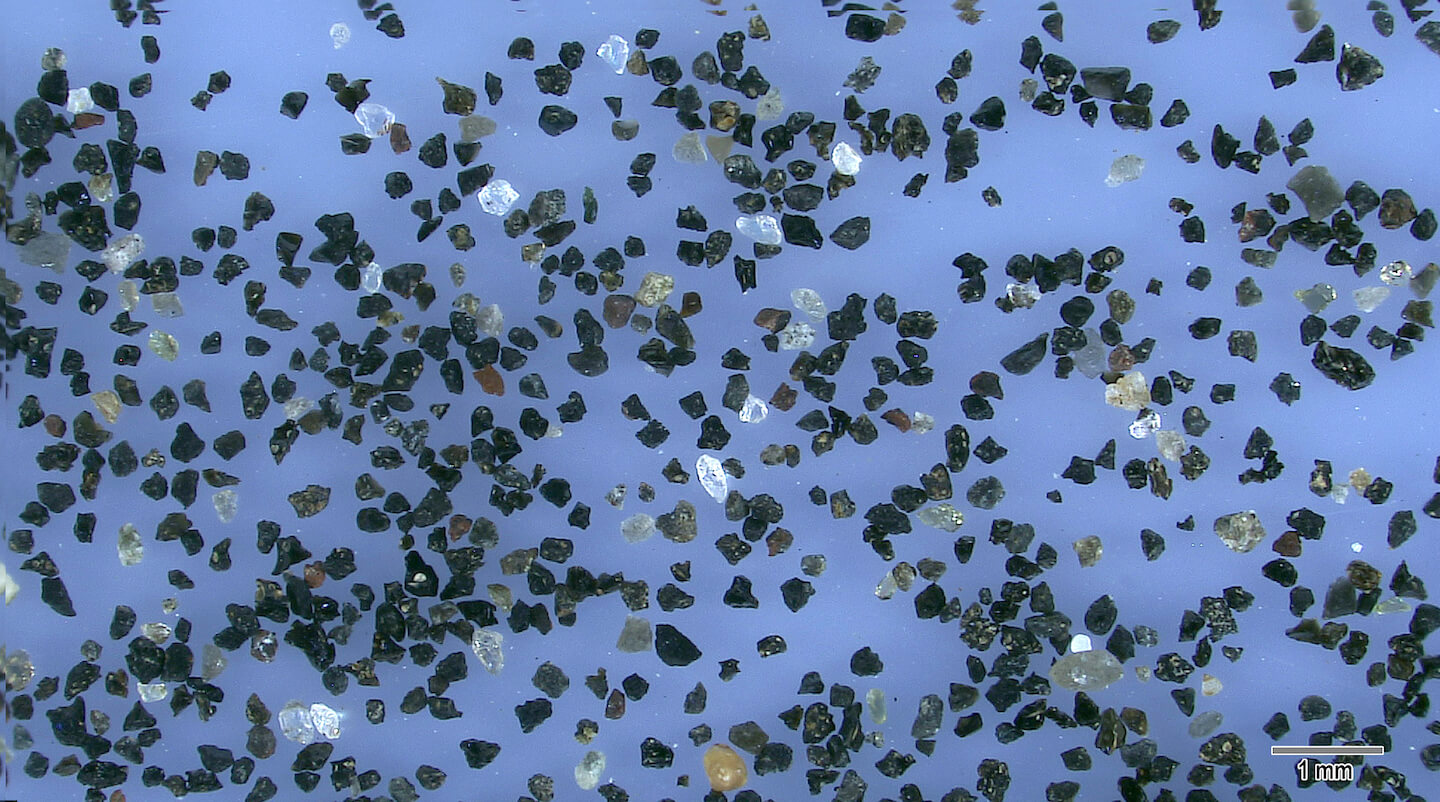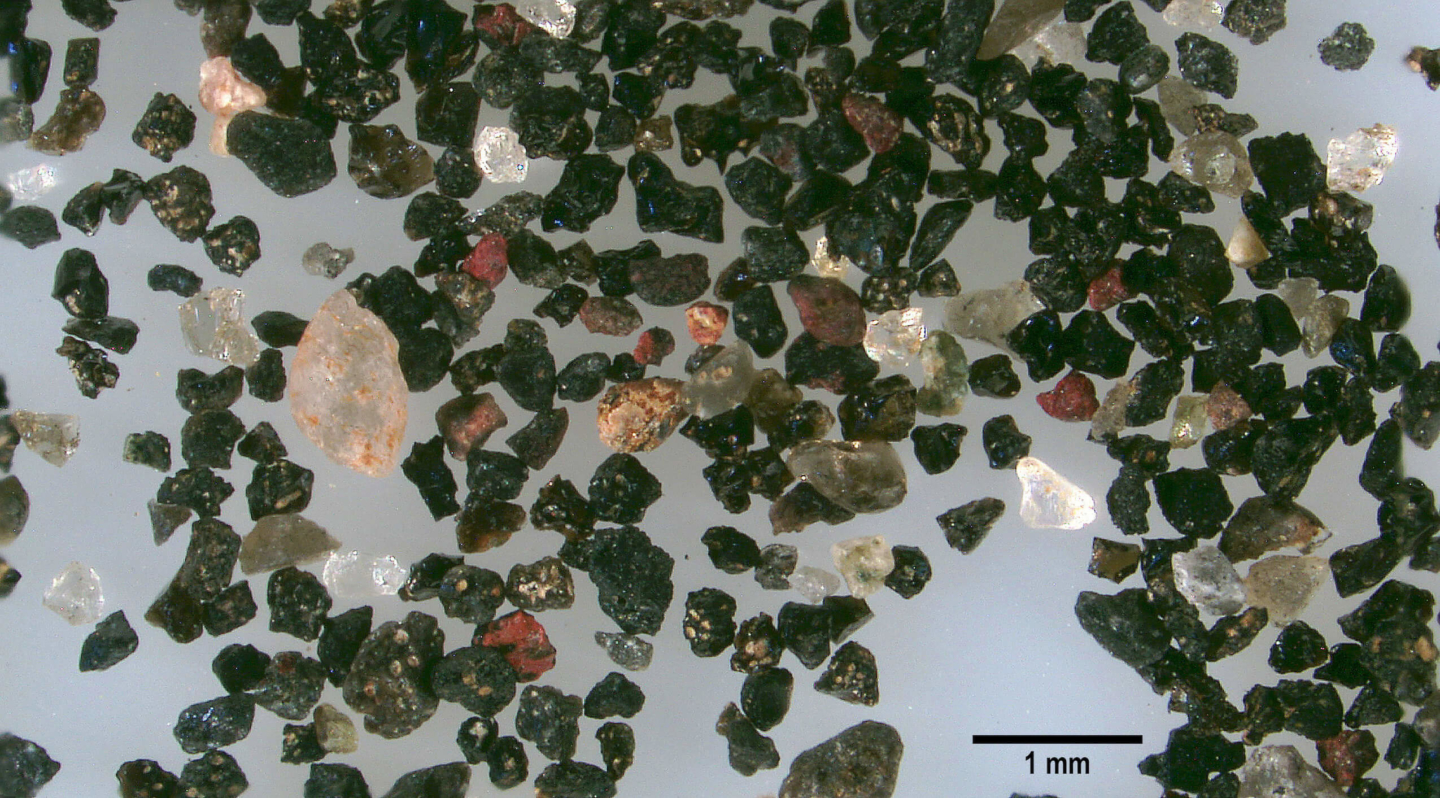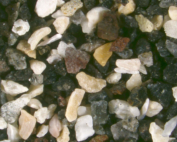

Sharply angled black sand grains of basalt along with a few clear quartz grains make up this sample of sand from Reynisfjara Beach, probably the most famous black sand beach in Iceland. The sharp edges of the sand grains indicate this beach sand is relatively young geologically.
Geographic Overview
Perhaps the most famous and most photographed black sand beach in Iceland, Reynisfjara Beach is known for its sea stack basaltic columns that extend to the ocean’s edge. This site is listed among the top ten of the most beautiful non-tropical beaches in the world. Powerful sneaker waves, responsible for a number of drownings, can appear here when least expected since there is no significant land mass between Antarctica and the shores of Reynisfjara.
Sand Gallery

A relatively larger cloudy quartz grain, small clear quartz grains, red grains that may be jasper, and black grains with evidence of phenocryst inclusions that formed during volcanic eruption make up this example. This sand has sharp angles indicating the sand grains have not yet been worn smooth by wave action.

Dark gray and black sand grains, some with phenocryst inclusions, are present in this sand sample along with clear and smoky quartz and occasional reddish sand grains that are likely jasper.

Despite the beach is known for relentless strong wave action, the sand grains all have sharp edges signifying this sand is relatively young geologically. Aside from mostly dark gray and black grains, occasional clear and smoky quartz grains are present in this sample.




















